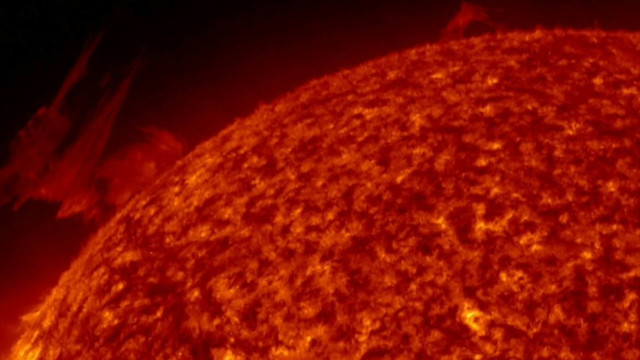Less than a month from now, Americans will witness something very unusual: a total solar eclipse.
For about two minutes on August 21, the Earth’s moon will completely block the Sun across the U.S. It’s something that hasn’t happened in the country in 99 years.
Not only is it must-viewing for millions of tourists, it’s a huge deal for scientists. CGTN’s Hendrik Sybrandy reports from the U.S. state of Colorado.
“The entire country can participate. There’s never been an event like this in human history,” suggested Carrie Black, from the National Science Foundation.
On that Monday, the moon will completely cover the Sun in the sky for a few minutes at each point along a 110-kilometer-wide path across the U.S.
“If you want to see the full show, you have to take yourself to the path of totality. If you just want a partial show, you can just remain where you are and the eclipse will come to you,” Lika Guhathakurta, NASA’s top scientists on eclipses said.
Solar scientists want to see the full show. A wide array of experiments on the ground and aloft is aimed at getting better answers to questions. “What makes the solar corona, the outer atmosphere of the Sun, so hot?” asked Amir Caspi, a scientist for the Southwest Research Institute.
Caspi will be in a plane 15 kilometers above the Earth along with two high-speed cameras trained on the corona, that ultra-hot plasma which on every other day is obscured by the Sun’s bright surface.
“When the moon blocks out the disk of the Sun, we can see things that are a billionth as bright as the surface of the Sun and we can see them right down to the edge of the Sun,” explained David Elmore from the National Solar Observatory.
One big component of the eclipse observations is citizen science. 70 of these telescopes, operated by schools, libraries and private individuals will be trained on the Sun while it’s obscured.
The Citizen CATE Experiment will capture high-resolution images of the Sun’s inner corona all along the path of totality. Research into the corona could help better predict geomagnetic solar storms, which can affect technology in space and here on Earth.
“If you can give good weather, space weather, forecasting to power grid operators, to satellite operators, to astronauts in space, to airplanes, then they can mitigate around that,” said Guhathakurta.
With all the data expected, the sky may be the limit to what’s learned on Eclipse Day.
 CGTN America
CGTN America

